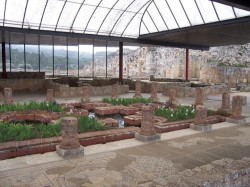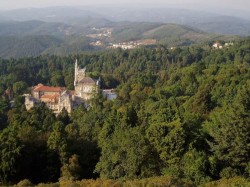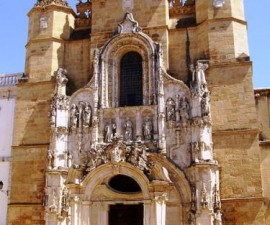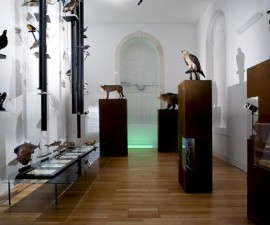Coimbra is located in the northern central region of Portugal and provides access to some of the country’s best-known centres of cultural or historical significance. There are many places worth exploring and many are within easy reach for a return day trip.
Most visitors to Coimbra, if they are staying for a few days or more, will make the effort to explore Conimbriga, the Roman settlement located some 16km from the city. Conimbriga is one of Portugal’s largest Roman settlements and is arguably the most important one. Classified as a National Monument for its historical significance, it provides a fascinating insight into the Roman era on the Iberian Peninsula.
Visitors can expect to see the beautifully preserved city walls that surrounded the settlement, the baths which still have the stone heating ducts in position beneath the missing floors, the amphitheatre, which had a capacity for some 500 spectators, and the foundations and remains of a number of houses. Of these, the House of the Fountains is perhaps the most notable for its well-preserved mosaic floors and colonnaded gardens adorned with cooling water jets.
The museum and visitor centre complete the offering at Conimbriga, providing an opportunity to read, hear and understand more about the settlement, its development, its historical importance and, of course, its suffering at the hands of the barbarians in the fifth century AD, which led to its ultimate demise.
Perched on a plateau above Coimbra, the settlement makes for a pleasant trip out of the city for the day, away from the crowds and summer heat to a place where the cooling breeze gently nudges you back through more than 2000 years of history.
Heading north from Coimbra, the road leads you to the ancient towns of Buçaco and Luso which are well worth a visit. Founded in the 11th century, the town of Luso became popular several centuries later as a spa town. These days, visitors still flock to the town in order to sample the healing properties of its waters, but it is much more relaxed than in its heyday as one of Portugal’s leading spa resorts.
Take the time to explore the local scenery and wander through the streets, soaking up the atmosphere of this 19th century spa town. Perhaps you even get the chance to fill up a bottle of water in one of the fountains scattered through the town.
Many visitors choose to combine a visit to Luso with a visit to nearby Buçaco, the charming town nestled deep in the heart of the region’s dense natural forest. Buçaco’s tranquil atmosphere lends itself to peace and reflection, leading it to become a popular location for the establishment of monasteries by the Benedictine order.
Later in the 16th century, Discalced Carmelite monks built a walled-in area of some 250 acres of the forest in which to cultivate trees and exotic plant species from all over the world, some 500 of which can still be found here.
The area has been designated a National Park and is a must-see destination for anyone with more than a passing interest in botany and horticulture. The ruins of the Carmelite monastery also remain here and are well worth exploring.
Although Coimbra is set inland, visitors need not miss out on the opportunity to sample Portugal’s famous sandy beaches during their stay. Figueira da Foz is the second-largest city in the Coimbra region and is situated on a wide estuary, right at the mouth of the Mondego River.
Figueira da Foz enjoyed huge popularity during the late 19th and early 20th century and its finest building, the Sotto Mayor Palace, dates back to this era. It is now open as a museum showcasing fine paintings and furniture of the time.
Head from the Sotto Mayor Palace to the Palace House, another former residence of the nobility, which is home to one of the world’s greatest collections of Delft tiles, believed to have been salvaged from a shipwreck during the 17th century.
Of course for many, the real draw of Figueira da Foz is its wide sandy beach (the country’s largest), which stretches for some two miles and is so wide that it takes a full five minutes to cross the sand and reach the water.
Highly popular amongst beach lovers, it has shot to popularity once more since hosting the World Surfing Championships in 1996 and remains a popular place for water-borne daredevils to practice their tricks. Nightlife in Figueira da Foz is also a treat, so try to stay a little longer and soak in the atmosphere.






